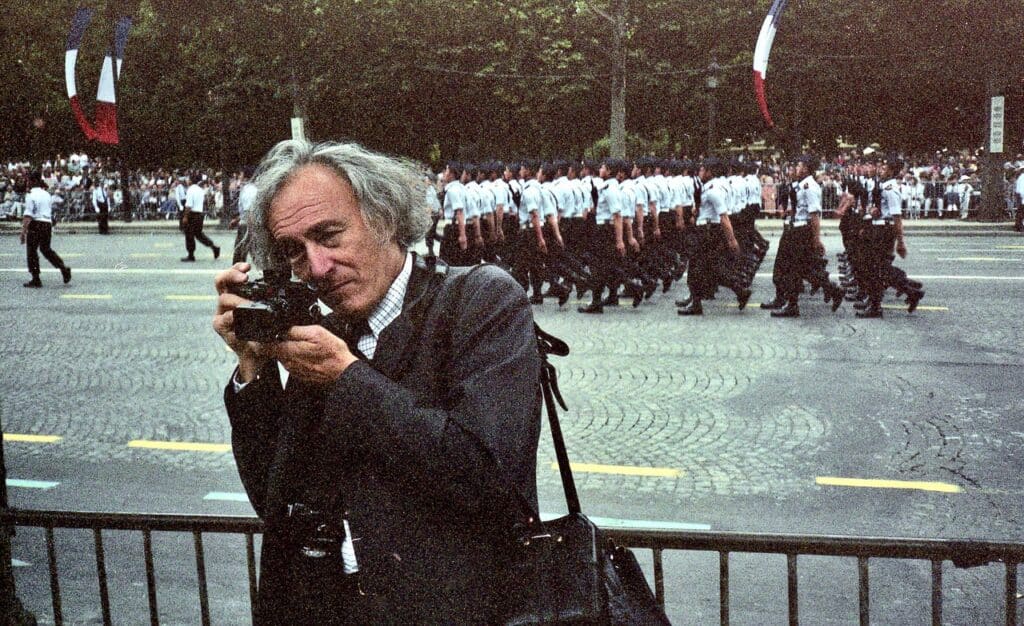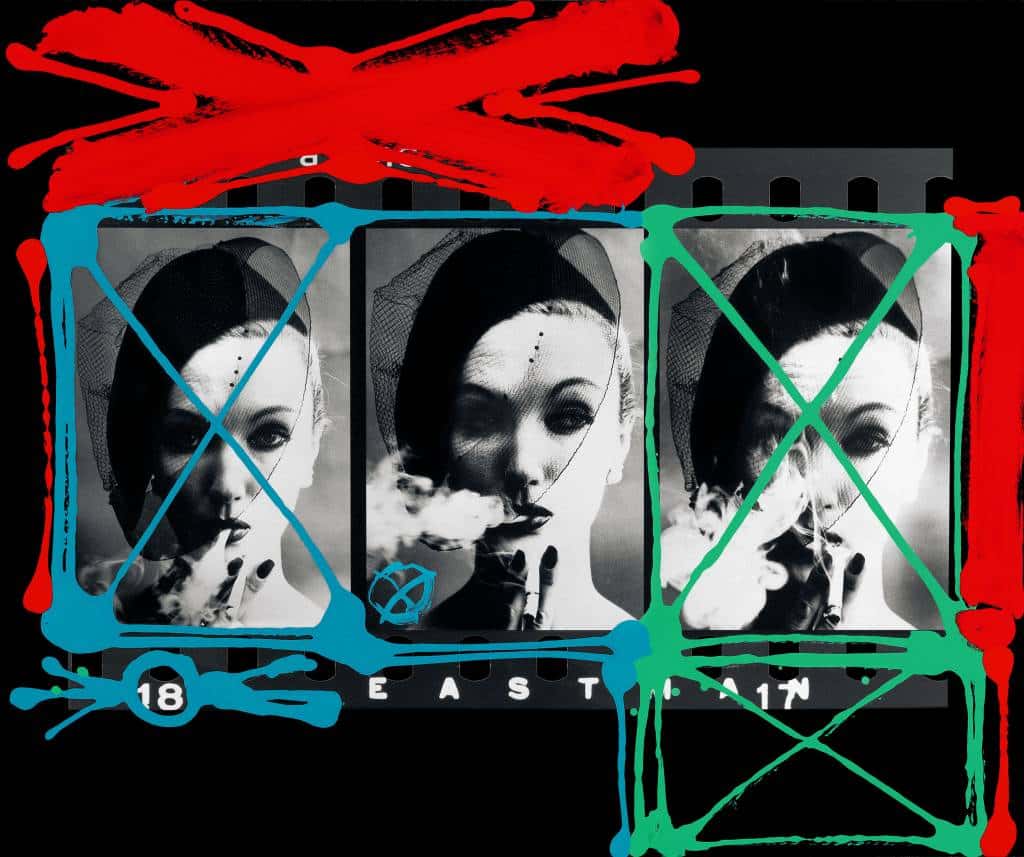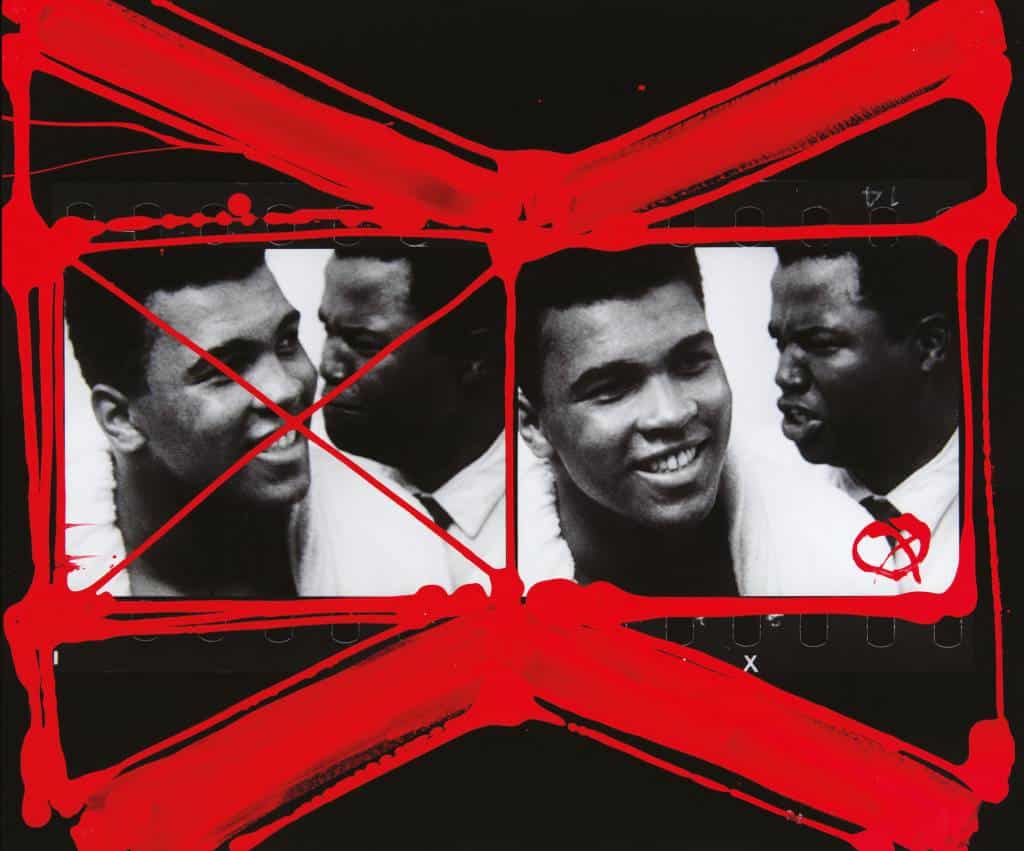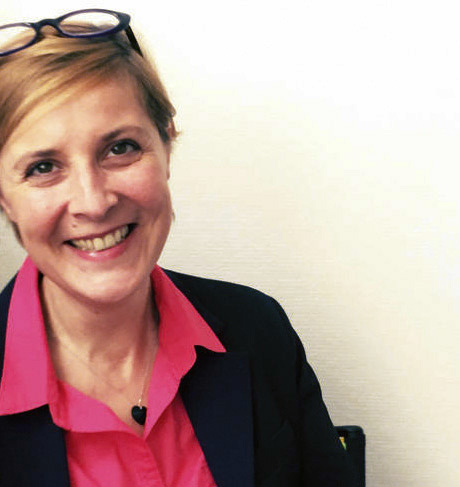2011, an encounter with William Klein for an article published in Images Magazine: you can see both the man and the artist, someone you won’t leave indifferent, as Jean-Luc Monterosso, the founder of the Maison Européenne de la Photographie (MEP), in Paris, and a Lyon gallery owner, Catherine Dérioz, can both testify.
William Klein: a rendez-vous with a legend. One should prepare twice for a meeting like this. You can consult his biography, leaf through his books, but all this won’t put you at ease. A career spanning over sixty years is awe-inspiring. Even if it is not the first time that you meet him.
Even as you arrive at his place, you’re still unsure where to start with William Klein. You can’t shake the feeling you know everything and at the same time know nothing at all.
William Klein: pushing the boundaries of photography towards modernity
The history of photography tells us that William Klein had left his mark already on the 1950s by breaking with the established order and imposing a rule-defying style: he reframed his photos, played with blurry and grainy effects, and had a strong penchant for strong contrasts and shaky images. This was a revolution.
History also reports that his 1956 book New York, which he designed himself, ushered photography into the modern era. The not yet ten-year-old Magnum Photos agency was fighting hard to get the photos published uncropped. William Klein turned things on their head.
How and why did he do what he did? He first recalled how he discovered photography. The photographer had studied sociology and psychology, only to become a painter and an occasional graphic artist.
He was already familiar with photography, he explained, at least the work of Jacob Riis, Lewis Hine, and Walker Evans (whom he preferred to Doisneau or Cartier-Bresson), because at the age of thirteen or fourteen he attended an experimental school, “which was not too particular about student absences.”
He took advantage of this freedom and, with a couple of friends, went to MoMA to see the galleries dedicated to photography. That was nearly seventy years ago, and, although aged 83 when we spoke, William Klein had a keen memory and a sharp mind, always ready to crack a joke when you least expect it.
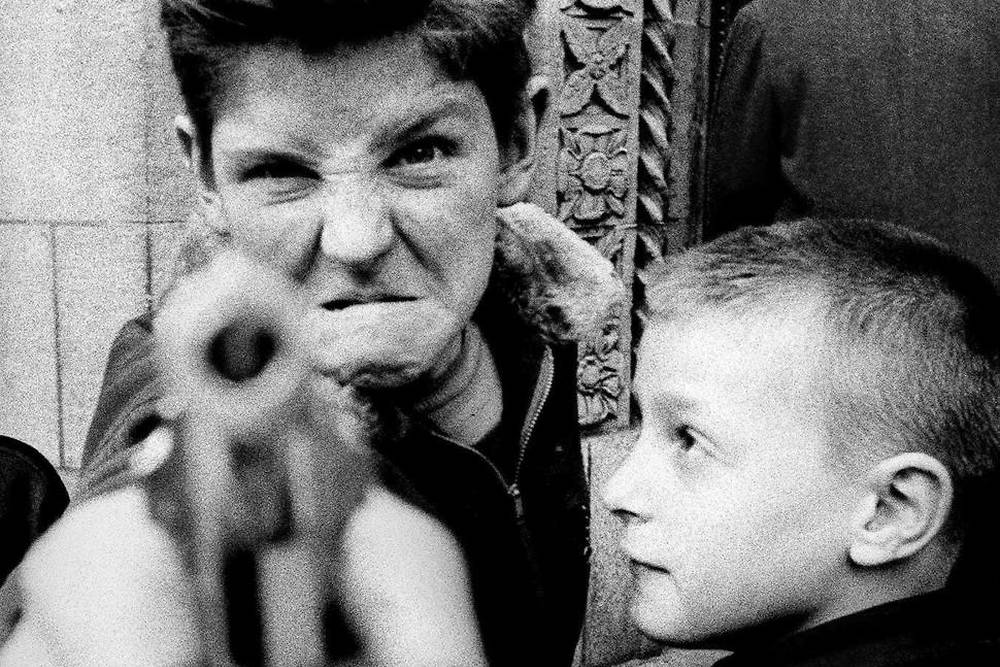
For example, speaking of his current relationship with a publisher of whom a friend had warned him about, William Klein said: “He’s a pirate,” adding casually, “much less funny than Johnny Depp.”
Changing topics, he went on: “I came to photography through painting; I told myself that for us, abstract painters influenced by Mondrian, photography was perhaps a way out of the rut. So I acquired a darkroom and began to experiment, at first without a camera, just by cutting sheets of black paper that I moved around, reproducing the effect of my abstract paintings.”
It was at this point that William Klein began to develop and enlarge his photographs: “I realized that the photos of my wife taken on a trip weren’t all that bad if I only chose the framing and the print, balanced black and white.”
Exhibiting photos in a different way
William Klein the photographer was born: “I was frustrated by the abstract things I was painting or doing in the darkroom. That’s what led me to take pictures of reality because, with photography, you can talk about life.” He felt that he had a particular way of seeing life and representing it, and this is what he decided to show.
Also, at the time he photographed New York, William Klein already knew that he wanted to make a book. This was the logical next step, because back then photographs were not exhibited the way they are nowadays: “In the street, I would see double page spreads….”
An instinctive photographer, he obeyed no rules or limits: “I realized that you could do a lot of things with a negative and a darkroom. I knew that normal photos could be messed with, cropped and printed anyway you wanted, and that excited me.”
William Klein’s book was published by Seuil thanks to French visual artist Chris Marker, the meeting with whom Klein recounted as if it were yesterday: “When I finished my book, nobody in New York wanted it. They said it was too anti-American, too dirty, that it gave a negative vision of the city. In Paris, where I lived, I discovered the Petite Planète collection headed by Chris Marker at Seuil. He said right away, ‘I’ll do the book or I’ll quit.’ He regularly threatened to leave Seuil! Marker was my guide.” Two years later, Rome was published by the same publisher.
While New York was a deliberate project, Rome came about almost by chance. William Klein initially went to the Italian capital to assist filmmaker Federico Fellini on the set, but when he arrived he learned that the film had been delayed. It was 1957.
Hesitating whether to go back home, he decided to stay to photograph the city and do a second book: “It was necessarily different from New York, which was my hometown, but in Rome I was almost at home because I knew Italian cinema, which was very fashionable.”
Architecture, street life, anonymous people, and celebrities all come together in this book, where ordinary scenes alternate with extraordinary moments. In the first published edition, Rome was divided into five chapters; a sixth, dedicated to fashion, was added in a later edition to include fashion photographs taken for Vogue in 1960.
Then followed Moscow, where, William Klein recalled, as an American in the thick of the Cold War, he paradoxically had no difficulty taking photos in the street, and Tokyo—both books published in Japan. Just then the doorbell rang, the next appointment was there, and it was time to leave William Klein. With regret.
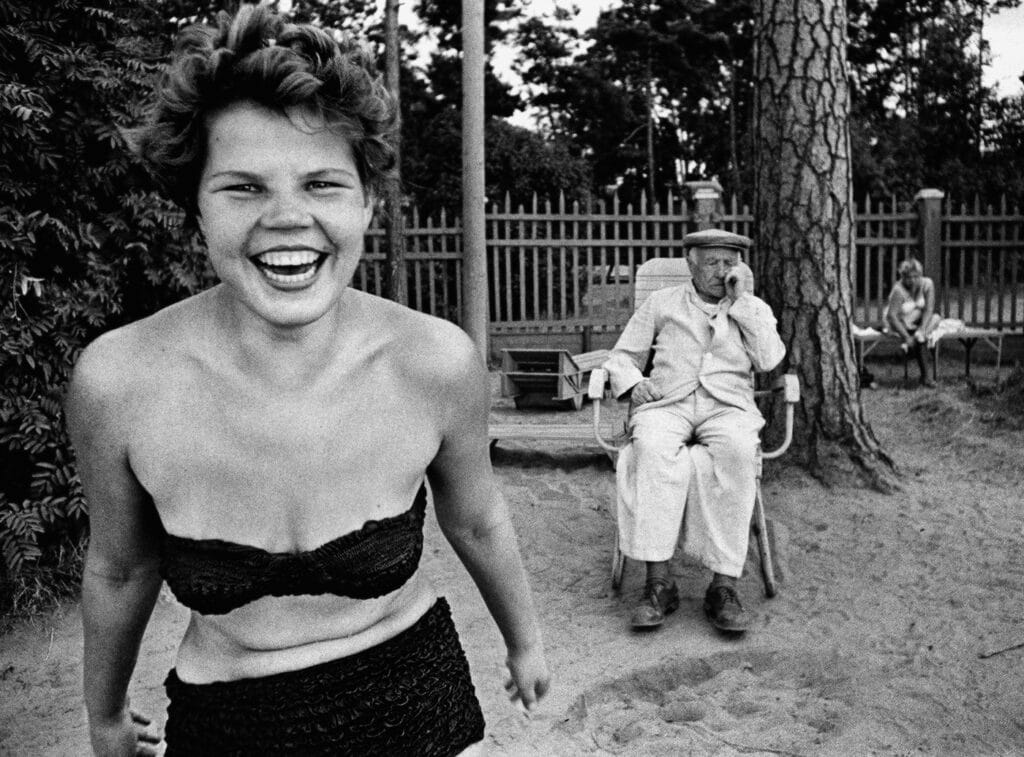
With regret, indeed, since William Klein is one of those people who have left a mark on the minds of those who met him casually as much as those who have worked with him for decades.
Thus, Jean-Luc Monterosso and William Klein have a long history that goes back to the beginnings of the opening of the Maison Européenne de la Photographie (MEP), an institution which the photographer was particularly fond of: “A family home—of a photographic family,” he declared on the institution’s tenth anniversary in 2006.
William Klein, breaking the rules of photography
For Jean-Luc Monterosso, who worked with the photographer on his first retrospective in China, which will open in November at the Contemporary Image Museum in Chengdu (China), William Klein is, along with Robert Frank, a founding father of the MEP in Paris: “He turned the history of contemporary photography inside out by breaking the rules and by his radicalism. He changed how photography is done, approaching it very head on. And at the same time, he epitomizes street photography, as his books on New York, Rome, Moscow, Tokyo, and Paris demonstrate.”
“Although there was no love lost between him and the milieu of fashion—as proved by his 1966 movie Who Are You, Polly Maggoo?—he was, once again, an uninhibited fashion photographer. He innovated by photographing the models in the street, in the middle of traffic, with a telephoto lens.”
“William Klein is also unique because he is a total artist: painting, photography, cinema, graphic design… he always followed things through to the end, whether it came to his book layouts or exhibition setup which he designed himself,” said Jean-Luc Monterosso. “With his insatiable energy, creativity, and curiosity, he accumulated images in space, making them collide to a spectacular result.”
The founder of the MEP also remembers William Klein as a man of conviction: “He stood firmly against the American way of life, against ‘king dollar,’ etc., and he had strong political convictions… With a provocative, sometimes harsh sense of humor, he was always to the point, affectionate, and loyal in friendship as in love. With his death, the twentieth century comes to an end.”
Since the mid-1950s, William Klein resided in an apartment decorated with his wife’s paintings and which looked out onto the Luxembourg Gardens. In recent years, he could still be seen in a wheelchair at photographic events, such as inductions of photographers into the French Academy, which testified to his insatiable love for this art form.
He enjoyed sometimes showing off his grumpy or provocative side, flaunting his nearly raw nonconformism, which had made him a legend, even while remaining attached to those who had helped him to push photography forward.
Since 1991, William Klein has remained faithful to one gallery, Le Réverbère in Lyon. As Catherine Dérioz, head of the gallery recalls, it was there that he exhibited his painted contact sheets for the first time, in the 2000s.
That is also where his most recent French exhibition took place this summer, including a third of his unpublished works: “William Klein trusted us to the end. I will never forget our first meeting in 2011. I was afraid because he could be abrasive. He had just pulped copies of a book forthcoming from Aperture. That says a lot… ‘I only do big exhibitions,’ he replied to my proposal of exhibiting his work on the gallery’s tenth anniversary. Destabilizing people was a way for him to size them up, he was full of humor. William Klein’s photography was like him, unsettling. He shook things up and kicked doors wide open.”
Note: part of this article appeared in 2011 in Images magazine.
Visit the websites of Galerie Réverbère and Chengdu Image Museum.
